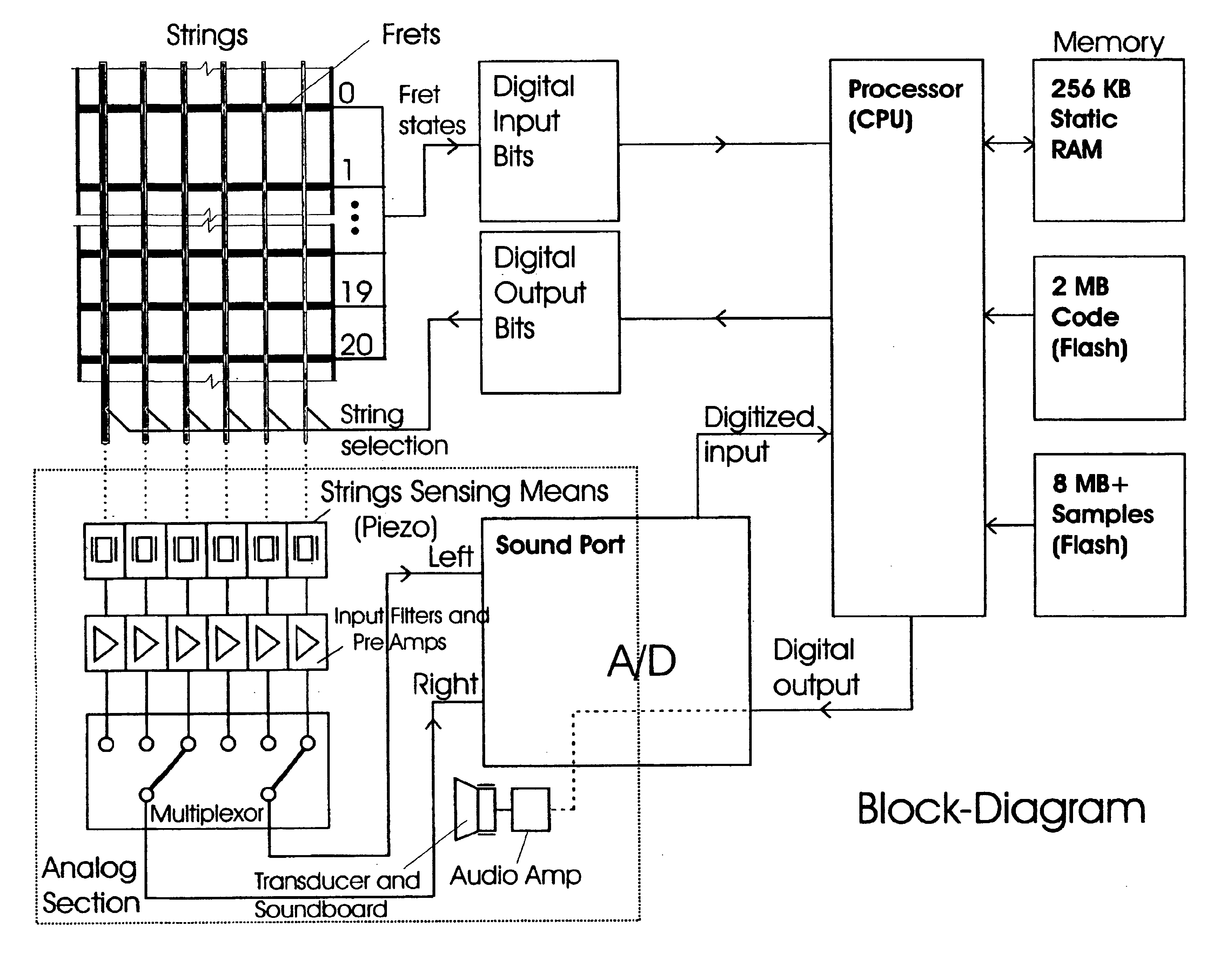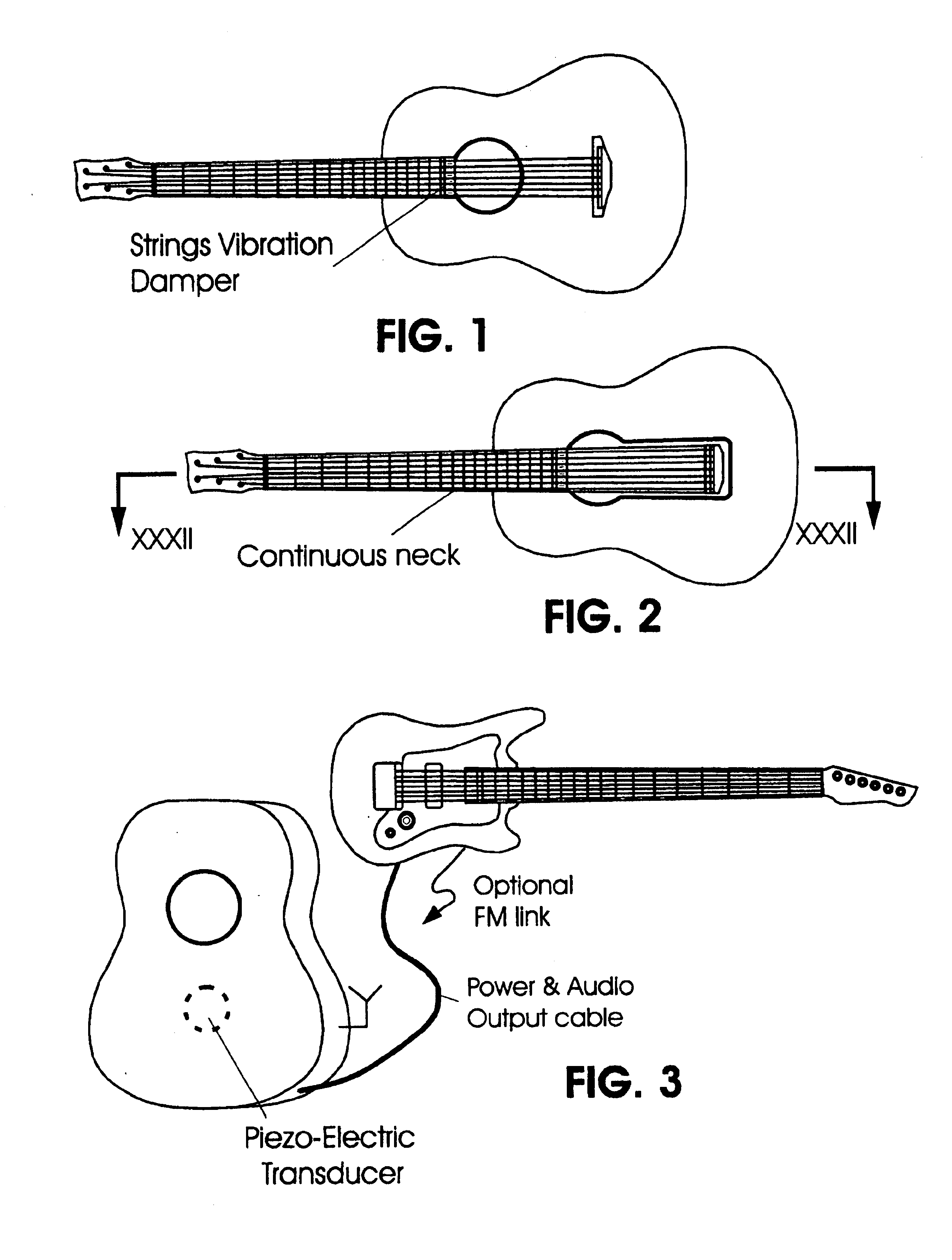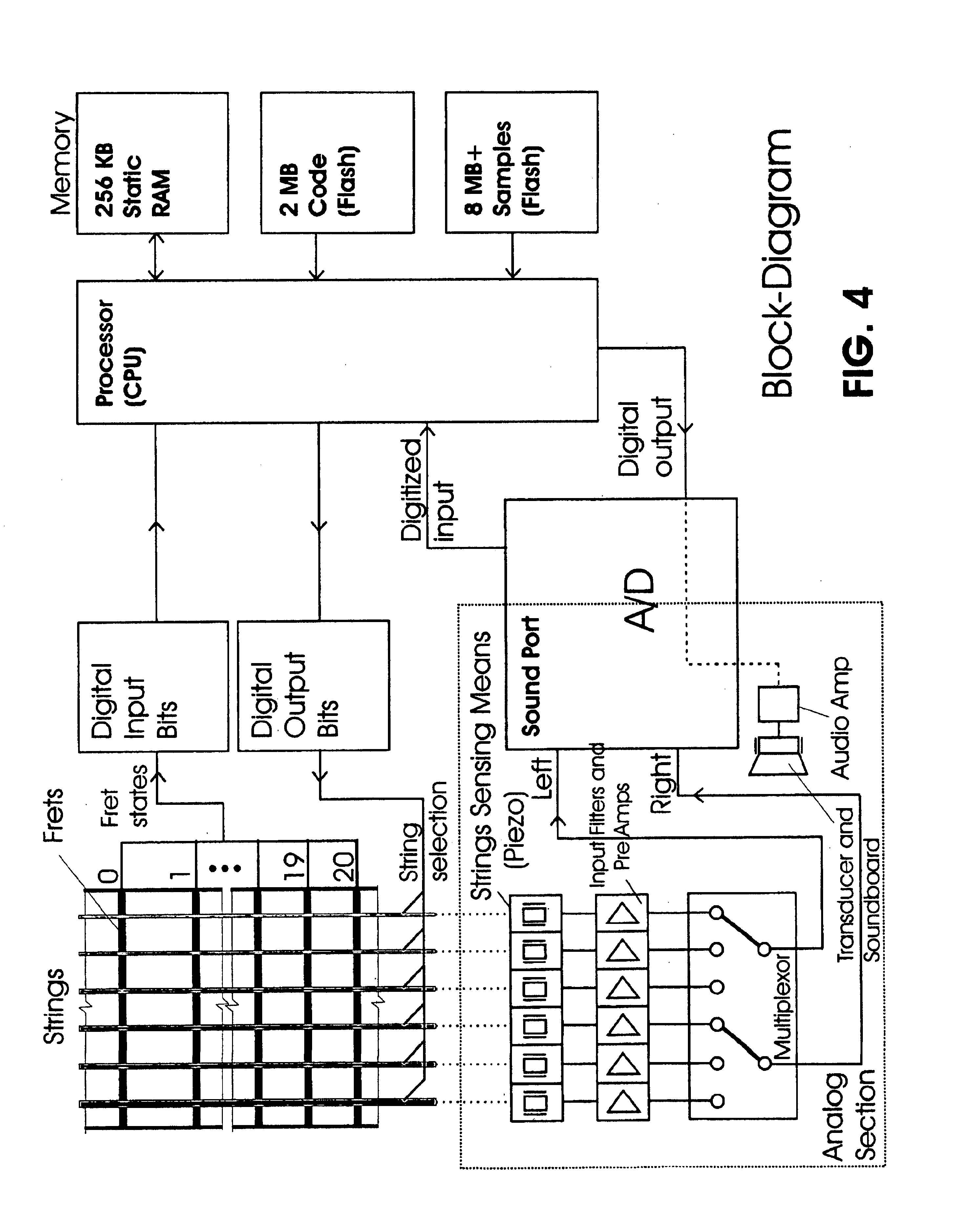Electronic-acoustic guitar with enhanced sound, chord and melody creation system
a technology of electronic guitar and creation system, applied in the field of electronic acoustic guitar with enhanced, can solve the problems of not having the means for reproducing a sound, the device was generally difficult to use, and the guitar does not offer electronic chord creation, etc., to achieve simple fingering, low weight, and high quality sound
- Summary
- Abstract
- Description
- Claims
- Application Information
AI Technical Summary
Benefits of technology
Problems solved by technology
Method used
Image
Examples
Embodiment Construction
General characteristic of the preferred embodiment (FIGS. 1-4) are as follows:
The guitar is a able to select a chord or a note to be played by depressing the string with one finger (more complex chords and extensions or slush chords may require two or maximum three fingers spaced apart no more than three adjacent strings or four frets); play a note by plucking the string or play a chord by strumming the strings starting from the string other than the one depressed by a finger or the higher string in two or three finger combination; provide feeling of naturally played guitar by recreating the velocity of the note proportionally to the force of the strumming or plucking; hear up to six simultaneous guitar sounds from the memorized guitar (or other instruments) samples at sampling rate of at least 20.05 kHz; select several modes like easy to play mode, normal guitar tuning, etc.; adjust the volume and the trigger thresholds levels. The guitar as per present invention is self contained ...
PUM
 Login to View More
Login to View More Abstract
Description
Claims
Application Information
 Login to View More
Login to View More - R&D
- Intellectual Property
- Life Sciences
- Materials
- Tech Scout
- Unparalleled Data Quality
- Higher Quality Content
- 60% Fewer Hallucinations
Browse by: Latest US Patents, China's latest patents, Technical Efficacy Thesaurus, Application Domain, Technology Topic, Popular Technical Reports.
© 2025 PatSnap. All rights reserved.Legal|Privacy policy|Modern Slavery Act Transparency Statement|Sitemap|About US| Contact US: help@patsnap.com



